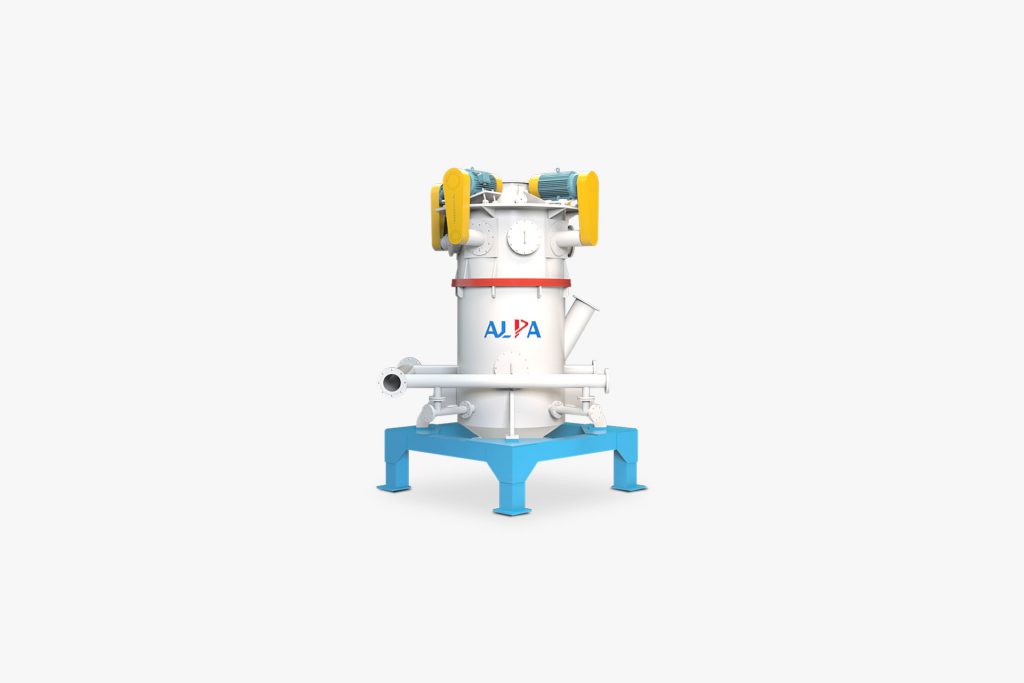Stirring mill, jet mill, sand mill, how to choose?

Ultra-fine grinding equipment uses mechanical force to grind materials to the micron level and classify them. Due to its good processing performance, it is widely used in high-end coatings, food, medicine, chemicals, building materials, medicinal materials, mining and other industries. With the rapid development of the global economy, my country’s powder industry is booming, and powder equipment, especially ultra-fine crushing equipment, plays a key role in this.
Mixing mill
A stirrer grinder (stirrer mill) refers to a type of ultra-fine grinding equipment consisting of a stationary cylinder filled with grinding media and a rotating agitator. The cylinder of the mixing grinder is generally made with a cooling jacket. When grinding materials, cooling water or other cooling media can be passed into the cooling jacket to control the temperature rise during grinding. The inner wall of the grinding barrel can be lined with different materials according to different grinding requirements, or a fixed short shaft (rod) can be installed and made into different shapes to enhance the grinding effect. The agitator is the most important part of the mixing mill, and there are types such as shaft-rod type, disc type, perforated disc type, cylindrical type, ring type, spiral type, etc. Among them, spiral and rod stirrer mills are mainly vertical, while disc stirrer mills come in two types: vertical and horizontal.
The particle size of the finished product of airflow mill is in the range of 1~30μm, and the particle size of the processing feed is strictly controlled below 1mm under normal circumstances. It can be widely used in materials such as rare earths, various hard marbles, kaolin, talc and other medium-hard non-metallic minerals. of ultra-fine processing.
Flat airflow pulverizer: Flat airflow pulverizer is also called horizontal disc airflow mill. When the equipment is working, high-pressure airflow is ejected from the nozzle at ultra-high speed, and the material is accelerated by the Manchuri nozzle and then sent to the crushing chamber for high-speed circular motion, where it is crushed through impact, collision, and friction. Under the action of centrifugal force, coarse particles are thrown towards the wall of the crushing chamber for circular crushing, and fine particles overflow with the airflow and are collected. The advantages of this equipment are simple structure and easy operation.
Fluidized bed air jet mill: commonly used for ultra-fine crushing, breaking up and shaping of materials in ceramics, chemical raw materials, refractory materials, battery materials, pharmaceuticals and other industries. When the equipment is working, high-pressure air is sprayed into the crushing chamber at high speed through several nozzles. The fed materials are accelerated by the high-pressure airflow in the crushing chamber. They are crushed through collision and friction at the intersection of each nozzle, and then enter the classification chamber with the airflow to complete classification. The coarse material settles back to the crushing area to continue crushing, and the overflow of qualified products is collected by the cyclone separator.
Counter-jet airflow pulverizer: Counter-jet airflow pulverizer is also called collision airflow mill and reverse jet mill. When the equipment is working, two accelerated materials and high-speed airflow meet at a certain point on the horizontal straight line and collide to complete the crushing. The solid particles that enter the classification chamber with the airflow are under the action of the classification rotor, and the coarse particles remain on the outer edge and are crushed. Return to the crushing chamber for re-crushing, and the fine particles that meet the particle size requirements continue to rise, and after flowing out, they become products through gas-solid separation.
Sand mill
A sand mill is another form of stirrer or bead mill, so named because it originally used natural sand as the grinding media. Sand mills mainly rely on the high-speed rotation between grinding media and materials to perform grinding work. They can be divided into open and closed types, and each can be divided into vertical and horizontal types.
Generally speaking, the difference between a horizontal sand mill and a vertical sand mill is that the horizontal sand mill has a larger sand capacity, higher grinding efficiency, and is relatively easy to disassemble and clean. In terms of application, sand mills are widely used in coatings, dyes, paints, inks, medical drugs, nanofillers, magnetic powder, ferrite, photosensitive film, pesticides, papermaking, cosmetics and other fields for efficient grinding of nanopowders.
No matter how the powder industry develops, ultrafine impact grinding has always been one of the main means to obtain ultra-fine powder.
